My friend John and I went sailplaning with the Fault Line Flyers in Briggs, Texas. In the picture above, I’m sitting in the cockpit, Vince is behind me and Tom is holding up the end of the wing as we are being towed. Before we see the rest of the pictures, it’s time for a science lesson. First, there is a difference between a glider and a sail plane – at least according to some sources. A glider can not be kept aloft by upward air motion so it descends. A sail plane can climb to a higher altitude using thermals. A thermal column (or thermal) is a column of rising air in the lower altitudes of the Earth’s atmosphere. Thermals are created by the uneven heating of the Earth’s surface from solar radiation, and are an example of convection. The Sun warms the ground, which in turn warms the air directly above it.
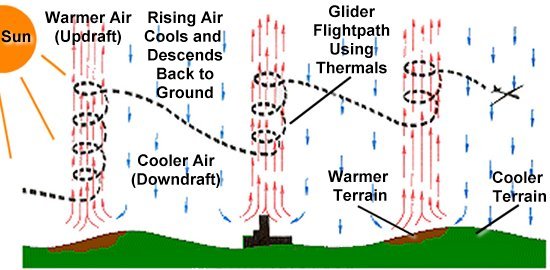
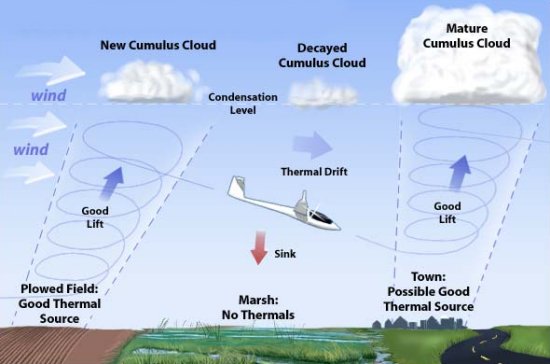
When the sun warms the ground, it will warm some features more than others (such as rock-faces or large buildings), and these set off thermals which rise through the air. Sometimes these may be a simple rising column of air; more often, they are blown sideways in the wind, and will break off from the source, with a new thermal forming later. Once a pilot finds a thermal, he or she begins to fly in a circle, trying to center the circle on the strongest part of the thermal (the “core”), where the air is rising the fastest. Most pilots use a ‘vario’ (vario-altimeter), which indicates climb rate with beeps and/or a visual display, to help ‘core-in’ on a thermal. Coring: The technique to “core” a thermal is simple: turn tighter as lift decreases, and turn less as lift increases. This ensures you are always flying around the core.
Since a sail plane can’t take off under its own power, it must be towed aloft by a plane, in my case, the one pictured above. When I first saw this plane, it reminded me of a replica of a WWII P-51 airplane, except without the struts.
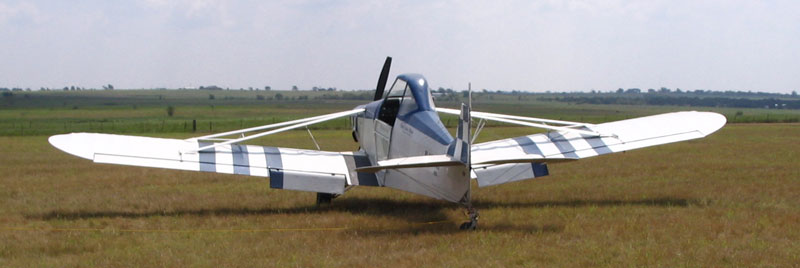

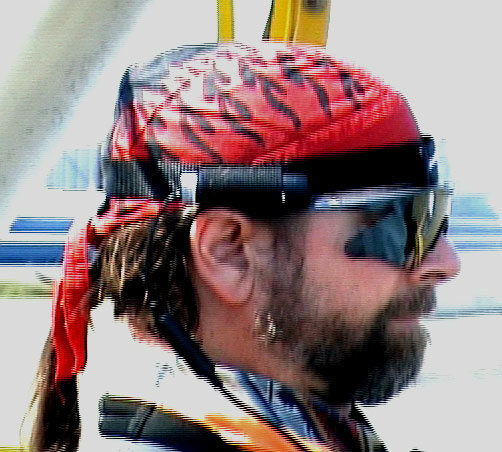
That’s me in the cockpit in front of Vince, the pilot. In the picture on the right, you can see I’m wearing a strap, around my head, which holds my Adventure Cam II from Viosport. I use it to film activities from a personal perspective. Unfortunately, it took us an hour and half to drive to Briggs, in the heat of the day. The policy there is first come, first up. We got there at noon but I didn’t go up till 3:30pm. By the time I got into the sail plane I was so hot I didn’t have the where-with-all to double check my camera equipment. As a result, I didn’t capture any video footage of the flight. No worries, we’ll be back.
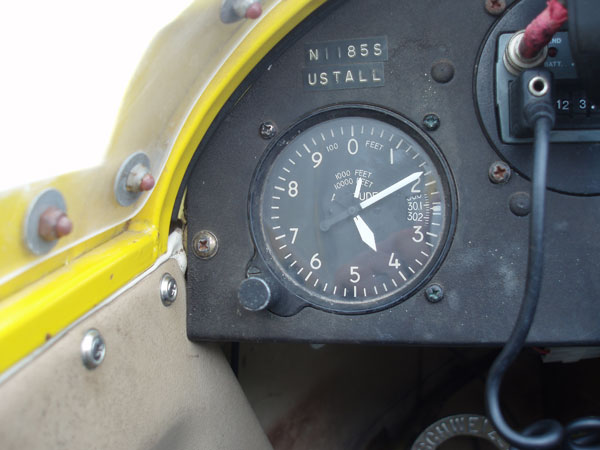
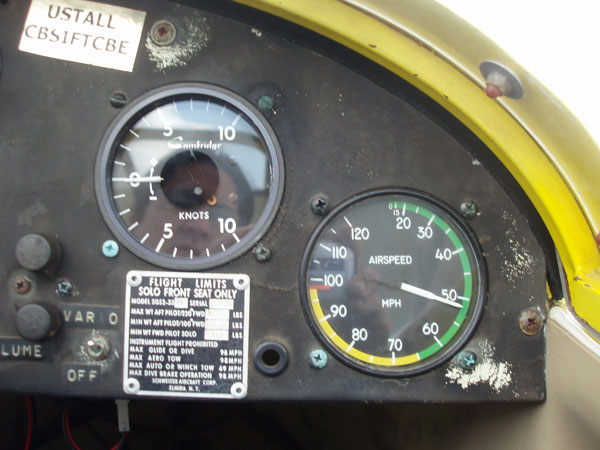
The dash of the sail plane is rather Spartan. On the left is the altimeter. It tells us how high we were. It is reading about 4,200 feet above sea level. Briggs field is at 1,100 feet. The tow plane is released by the sail plane at 4,100 feet. After Vince detached us from the tow plane, he was able to find thermals which took us up an additional 3,000 feet. We couldn’t go any higher without going into the clouds – a big no-no according to the FAA. The far right gauge tells us our forward air speed. Vince and I went up to 65 miles an hour. The gauge just to left of the air speed indicator is the ‘vario’ (vario-altimeter), which indicates climb rate. If it is positive it indicates we are climbing; if negative, it means we are descending.
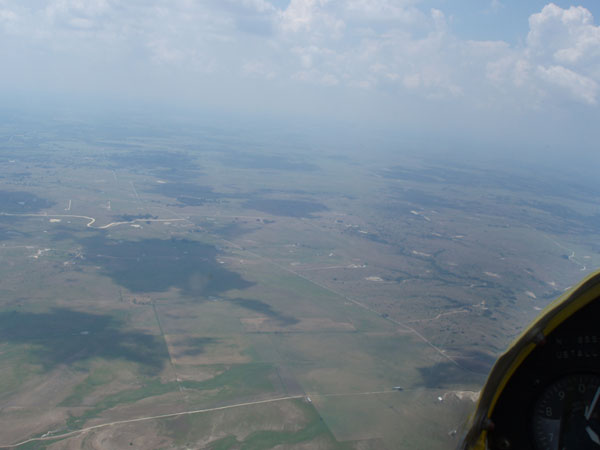
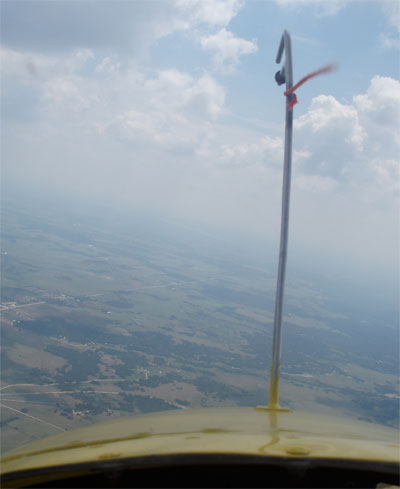
The photo at left was taken out the port (left) window. The one on right was taken straight ahead. There are two tubes stacked on the nose (one above another), one is the for the Vario, and the other is either Altimeter or Airspeed indicator. I don’t know how Vince was able to keep track of the airfield. He is pretty amazing; part bird, part human. Vince instilled a lot of confidence and I felt very safe with him as the pilot. I did get a little nervous when Vince passed out. I had to take the controls until he came to. The cost of the flight was only $45. I figured they saved money by not having insurance and foregoing those pesky, time-wasting safety inspections. The canopy is a very thin plastic. it is used to shield the passengers from the wind but offers no structural protection. I thought it would be quiet up there but the wind came rustling through the seams between the canopy and body of the sail plane. As a result, it was hard for Vince to hear me. On the plus side, the wind really cooled me off and gave me the sensation of actually flying.
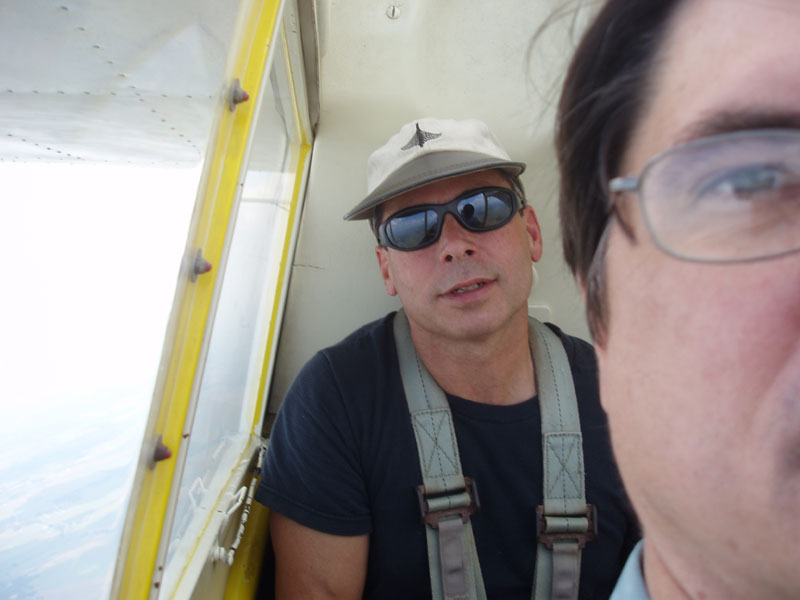
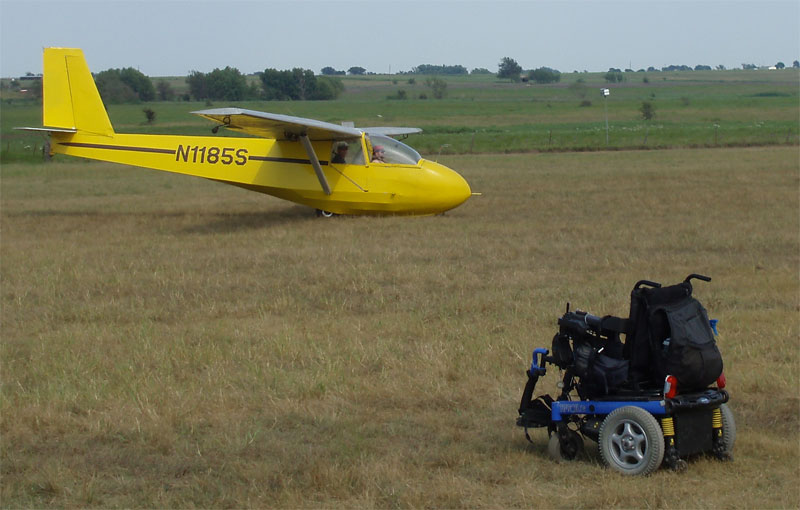
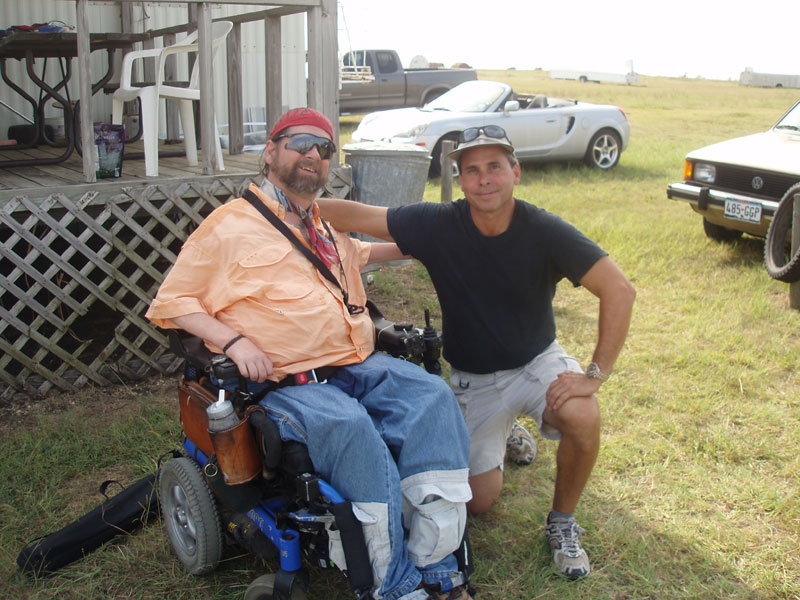
For more information on sailplaning, see: http://www.aerospaceweb.org/question/nature/q0253.shtml
